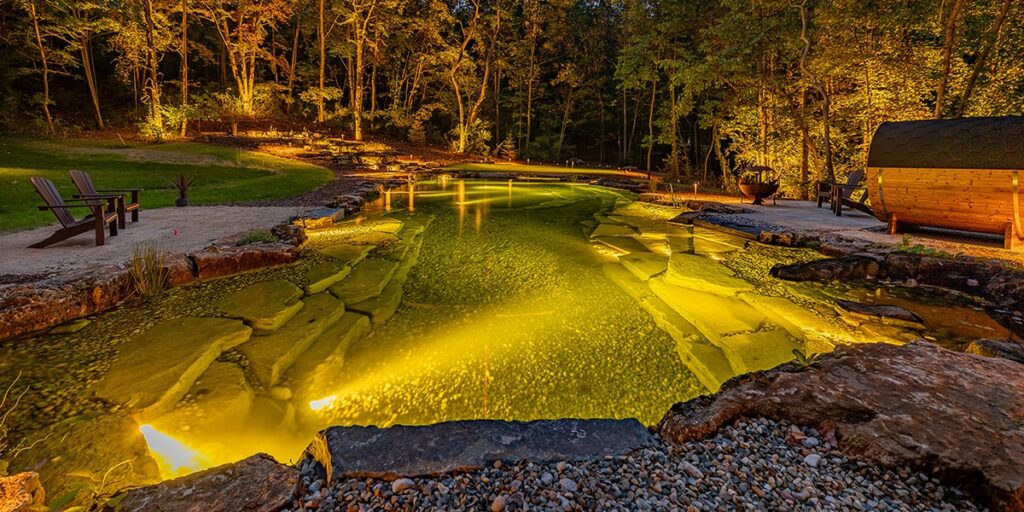 Prior to the initial outbreak of KHV in the United States, the worst thing we had to deal with was the dreaded Aeromonas in koi ponds. Aeromonas was capable of wiping out large populations in established ponds, but we learned it had temperature limitations. Aeromonas Alley, so it became known, was still feared or respected in the spring and fall. Fish were watched carefully for the reddened areas that would soon become open sores, ulcers and then dead fish if we did not figure out which injectable antibiotic worked. By this time, we knew about quarantine systems and microscopes.
Prior to the initial outbreak of KHV in the United States, the worst thing we had to deal with was the dreaded Aeromonas in koi ponds. Aeromonas was capable of wiping out large populations in established ponds, but we learned it had temperature limitations. Aeromonas Alley, so it became known, was still feared or respected in the spring and fall. Fish were watched carefully for the reddened areas that would soon become open sores, ulcers and then dead fish if we did not figure out which injectable antibiotic worked. By this time, we knew about quarantine systems and microscopes.
But in 1998 the first cases of KHV (although it was not identified as a virus at the time) showed up in the US and Israel. 1 We tried to pinpoint the fish dealer who brought the disease to a show in Hempstead, LI, NY, but koi ponds were rapidly wiped out within the next 1-2 weeks. The heartbreak was overwhelming as  owners watched helplessly as the expensive, friendly fish died. They tried vainly to save them. They did not know what they were dealing with. After this happened, koi shows changed. Bio-security became paramount! Quarantine systems became big sellers. No longer would koi shows have shared nets and tanks. Each owner had his own equipment. Partitions were placed between tanks so no water would splash from one to another. Sanitizing stations were put into practice.
owners watched helplessly as the expensive, friendly fish died. They tried vainly to save them. They did not know what they were dealing with. After this happened, koi shows changed. Bio-security became paramount! Quarantine systems became big sellers. No longer would koi shows have shared nets and tanks. Each owner had his own equipment. Partitions were placed between tanks so no water would splash from one to another. Sanitizing stations were put into practice.
Well, that is how hobbyists handled it on a koi show level.
Businesses that sold fish also became careful. Many fish sellers refused to allow any fish on their property, other than their stock. They would not even allow a recently sold fish to come back for examination, once it was in somebody’s pond. Nobody wanted to become infected. Nobody wanted to be “that dealer” who sold KHV infected fish. Nobody could risk a reputation like that and continue selling fish. How secure is the bio-security on a service level? How secure can the Bio-Security of the service personnel that goes from pond to pond with the same equipment, same waders, if they use them, and do not practice sanitization between ponds? There could be more than KHV traveling between ponds on our gear: cryptosporium, algae, parasites, flukes, anchorworm, etc, unless it is thoroughly cleaned and allowed to dry between ponds. Shortcuts to good bio-practices can show up in the total liabilities column at the end of the year.
 It has been less than 20 years since the initial introduction of KHV to the United States. Since that time, there have been major changes to the koi hobby. There are groups focusing on KHV prevention practices, identification, and elimination. But although we may be close, we are still as far from a cure as we were in 1998. We can’t afford to be careless with customers’ fish. Our own livelihood is at stake.
It has been less than 20 years since the initial introduction of KHV to the United States. Since that time, there have been major changes to the koi hobby. There are groups focusing on KHV prevention practices, identification, and elimination. But although we may be close, we are still as far from a cure as we were in 1998. We can’t afford to be careless with customers’ fish. Our own livelihood is at stake.
http://vri.cz/docs/vetmed/50-4-139.pdf

